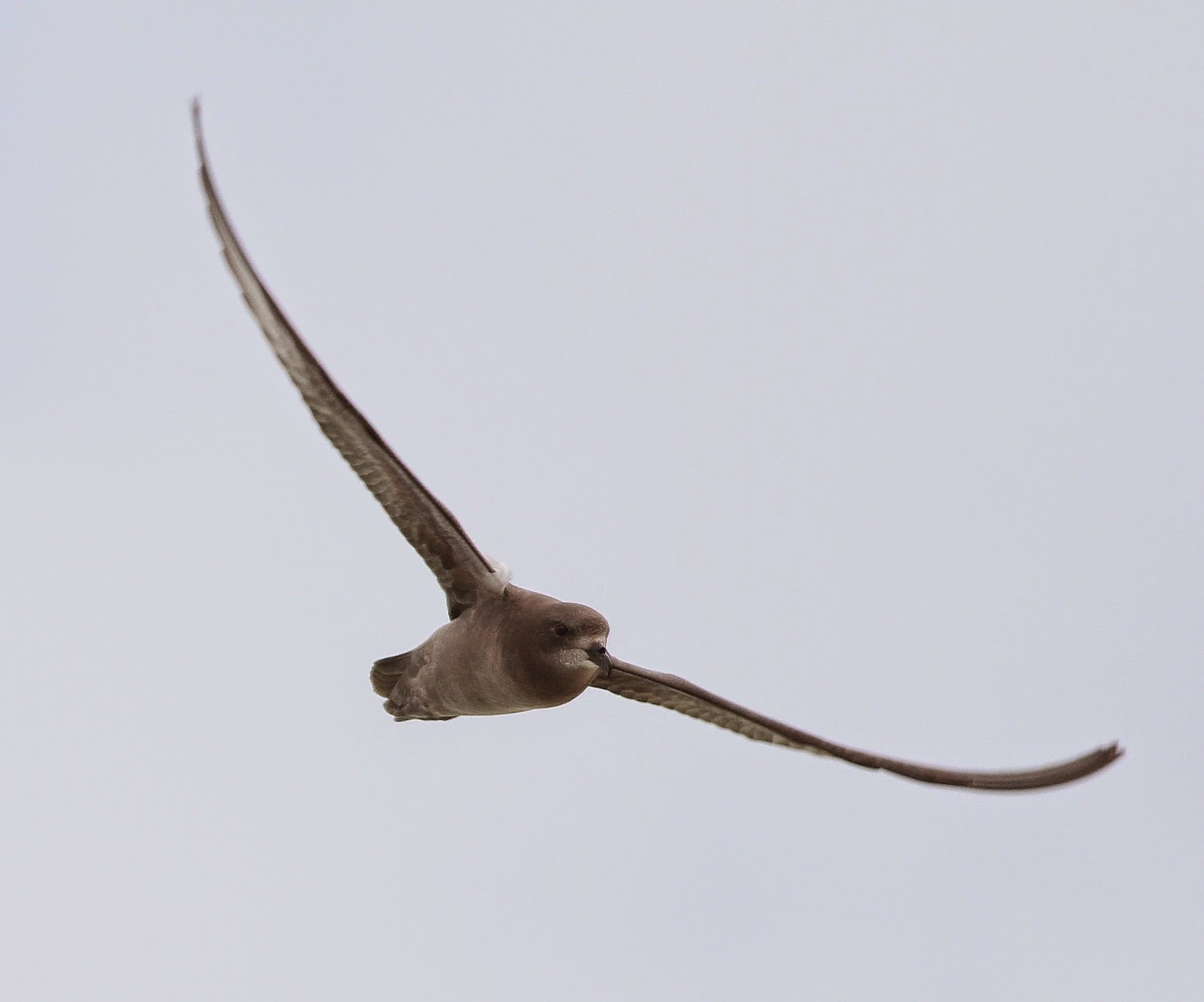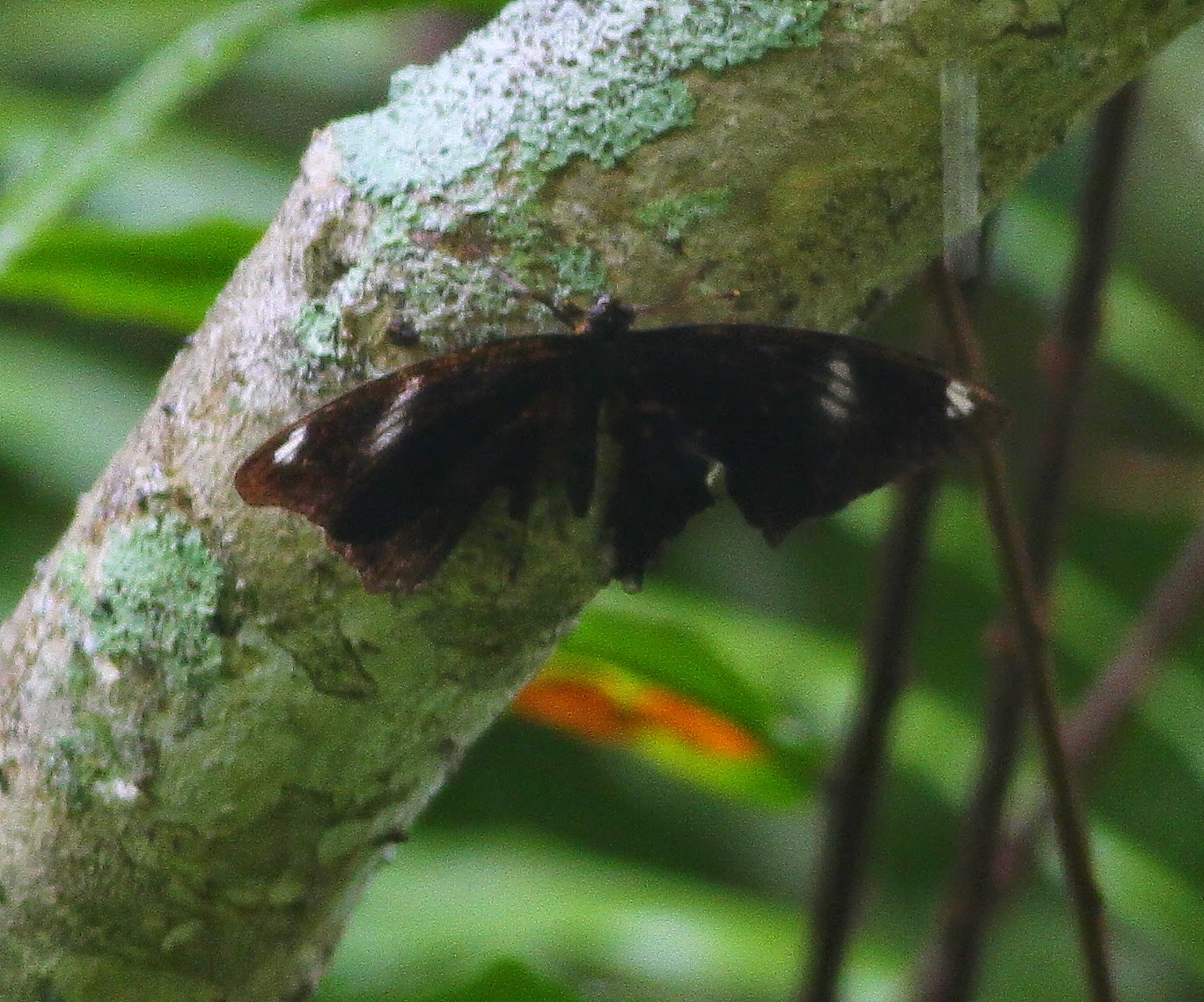Having seen the first of the four landbird endemics on Henderson Island, the Henderson Island Reed Warbler,
than there were still three more endemics to see.
Henderson Island Reed Warbler: Another individual that appeared whilst photographing the White Terns
Several times during
the day, We heard the short, high calls of the Stephen's Lorikeets, as
they flew over the Coconut fringed edge of the island. But seeing them
was a different matter. I did get some brief views & this was
followed by a good flight view from the beach, of an individual further
along the beach. But it flew into the trees before I could grab the
camera. Despite hearing them several more times, I failed to get any
more views. A real shame as it looked a great looking Lorikeet.
Stephen's Lorikeet: With no photos, I'm going to have to fall back on a photo I took of a painting in the Pitcairn museum
Another species We heard several times calling as it flew around was Bristle-thighed Curlew. Finally, I managed to get some flight shots as one flew over calling. Later we had one perched up on the edge of the island's plateau. The whole of the island is basically a coral reef which has been pushed up about 20-30 metres above sea level with a narrow coastal strip which includes a couple of beaches. I guess it wasn't too happy to have to share its beach with a bunch of Birders. This is another of the amazing Curlew species. This one breeds in West Alaska & winters in Hawaii, Micronesia & Polynesia. How the species first worked out the islands were there, is even more fascinating than how the current generation find the islands as they migrate South.
Bristle-thighed Curlew: They winter in small numbers on a number of small islands in the Pacific
Bristle-thighed Curlew: Have a listen to Dan Lane's recording of Bristle-thighed Curlew's excellent calls on Xeno-Canto as the call is great
Bristle-thighed Curlew: Sitting on the edge of the raised coral plateau
Throughout our visit, there were a number of Seabird species flying along the beach edge or heading into nesting sites on the island.
Murphy's Petrel: This is a regional breeding endemic species which breeds on the French Polynesian Tuamotu & Austral Islands and the British Pitcairn Island group (Henderson, Oeno & Ducie Islands)
Murphy's Petrel: Giving an nice underwing view
Murphy's Petrel: Showing the pale face patch of this species
Murphy's Petrel: We found this individual as it was moving to the beach to take off
Murphy's Petrel: A close up of the same individual
Murphy's Petrel: Another view of the typical tubenose bill
Murphy's Petrel: Later in the afternoon, I bumped into this pair of Murphy's Petrels
Red-tailed Tropicbird: This is the melanorhynchos subspecies which occurs in the West, Central & South Pacific which is replaced by the roseotinctus subspecies in the South West Pacific. Two other subspecies occur in the Indian Ocean
Great Frigatebird: Female. No surprise they were here
Great Frigatebird: Juvenile
Lesser Frigatebird: Adult male showing its diagnostic white underwing patches. This is the nominate ariel subspecies which was less commonly seen on the trip, although perhaps a few were overlooked amongst the much commoner Great Frigatebirds
White-capped Noddy
Grey Noddy: This used to be treated as Blue-grey Noddy, but Clements splits this former species into 2 Pacific species. The Grey Noddies around Pitcairn & Henderson Islands are part of the skottsbergii subspecies which also occurs on Easter Island & Sala y Gomez Island. Two subspecies are found around Lord Howe, Norfolk, Kermadec Islands & Tonga and the Chilean Desaventurados Islands, respectively
Finally, after a lot of searching, Chris & some of the others in the group located a Henderson Island Fruit-dove. Fortunately, it stayed put which allowed Chris to find myself & the rest of the group. Another of the single Island endemics seen.
Henderson Island Fruit-dove: Time for a preen for the wet looking individual
Henderson Island Fruit-dove: It finally fell asleep to the motordrive lullaby
Being
a very remote island, then there are few species of Insects there. I
only saw one species of Butterfly on Pitcairn & Henderson Island:
the Blue Moon Butterfly. This has a large world range from Madagascar to
South & South East Asia, Japan, Australia, New Zealand and Pacific
Islands as far as French Polynesia & the Pitcairn group.
Blue Moon Butterfly:
Male. It's a shame the hind wings are very worn as when fresh the males
have a large blue moon in the middle of the hind wing. The females are
brown with off small white spots & squares along the trailing edge
of the wings
We left the island after a fantastic day ashore, despite the intermittent rain, but slightly disappointed that we hadn't seen the Henderson Island Crake. With the anticipated arrival of another expedition ship for the following day & a poor weather forecast, we knew we wouldn't be considering going ashore the following day. So the plan was for a day of chumming at sea. We had time in the schedule for another attempt to land on Henderson Island, but the forecast wasn't encouraging.





















